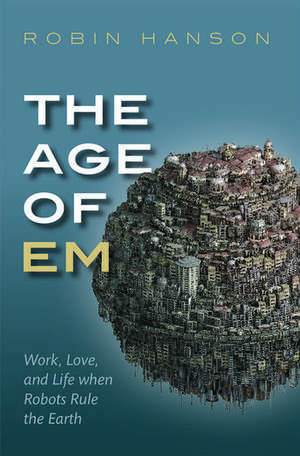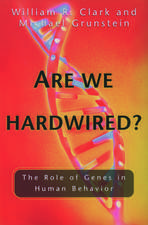The Age of Em: Work, Love, and Life when Robots Rule the Earth
Autor Robin Hansonen Limba Engleză Paperback – 5 apr 2018
| Toate formatele și edițiile | Preț | Express |
|---|---|---|
| Paperback (1) | 67.67 lei 10-16 zile | +29.39 lei 7-13 zile |
| OUP OXFORD – 5 apr 2018 | 67.67 lei 10-16 zile | +29.39 lei 7-13 zile |
| Hardback (1) | 234.22 lei 3-5 săpt. | |
| OUP OXFORD – 26 mai 2016 | 234.22 lei 3-5 săpt. |
Preț: 67.67 lei
Preț vechi: 78.36 lei
-14% Nou
Puncte Express: 102
Preț estimativ în valută:
12.95€ • 13.56$ • 10.71£
12.95€ • 13.56$ • 10.71£
Carte disponibilă
Livrare economică 04-10 martie
Livrare express 01-07 martie pentru 39.38 lei
Preluare comenzi: 021 569.72.76
Specificații
ISBN-13: 9780198817826
ISBN-10: 0198817827
Pagini: 528
Dimensiuni: 130 x 196 x 39 mm
Greutate: 0.45 kg
Editura: OUP OXFORD
Colecția OUP Oxford
Locul publicării:Oxford, United Kingdom
ISBN-10: 0198817827
Pagini: 528
Dimensiuni: 130 x 196 x 39 mm
Greutate: 0.45 kg
Editura: OUP OXFORD
Colecția OUP Oxford
Locul publicării:Oxford, United Kingdom
Recenzii
Hanson's predictions detail a world both uncanny and eerily familiar.
Plenty of futurists and science fiction writers have toyed with the idea that the brains of particular humans could one day be scanned and uploaded into artificial hardware but Prof Hanson's take is different. His aim is to use standard theories from the physical, human and social sciences to make forecasts about how this technological breakthrough would really change our world
What is remarkable ... is not just the detail ... but the way he situates it within a perceptive analysis of our human past and present
What happens when a first-rate economist applies his rigor, breadth, and curiosity to the sci-fi topic of whole brain emulations? This book is what happens. There's nothing else like it, and it will blow your (current) mind.
Robin Hanson brings intelligence, imagination, and courage to some of the most profound questions humanity will be dealing with in the middle-term future. The Age of Em is a stimulating and unique book that will be valuable to anyone who wants to look past the next ten years to the next hundred and the next thousand.
A highly provocative vision of a technologically advanced future that may or may not come true — but if it does, we'll be glad Robin wrote this book now.
Plenty of futurists and science fiction writers have toyed with the idea that the brains of particular humans could one day be scanned and uploaded into artificial hardware but Prof Hanson's take is different. His aim is to use standard theories from the physical, human and social sciences to make forecasts about how this technological breakthrough would really change our world
What is remarkable ... is not just the detail ... but the way he situates it within a perceptive analysis of our human past and present
What happens when a first-rate economist applies his rigor, breadth, and curiosity to the sci-fi topic of whole brain emulations? This book is what happens. There's nothing else like it, and it will blow your (current) mind.
Robin Hanson brings intelligence, imagination, and courage to some of the most profound questions humanity will be dealing with in the middle-term future. The Age of Em is a stimulating and unique book that will be valuable to anyone who wants to look past the next ten years to the next hundred and the next thousand.
A highly provocative vision of a technologically advanced future that may or may not come true — but if it does, we'll be glad Robin wrote this book now.
Notă biografică
Robin Hanson is an associate professor of economics at George Mason University, and a research associate at the Future of Humanity Institute of Oxford University. Professor Hanson has master's degrees in physics and philosophy from the University of Chicago, nine years experience in artificial intelligence research at Lockheed and N.A.S.A., a doctorate in social science from California Institute of Technology, 2800 citations, and sixty academic publications, in economics, physics, computer science, philosophy, and more. He blogs at OvercomingBias.com, and has pioneered the field of prediction markets since 1988.



























